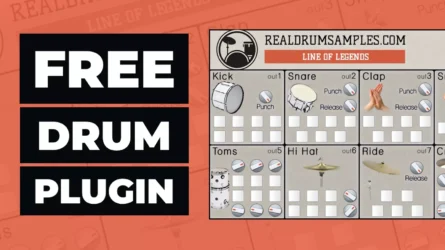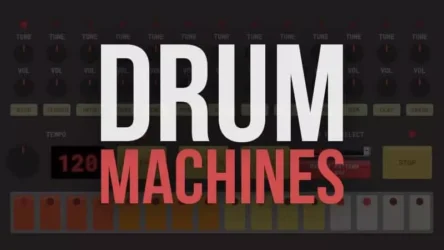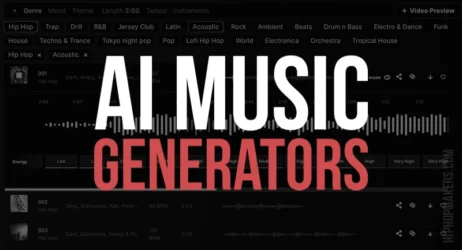This simple guide will answer what dynamics are in music. We will provide you with examples, explain the different types of dynamics, and why they are essential.
What Are Dynamics In Music?
Dynamics in music refers to the intricate process of varying the sound levels when music is played. Essentially, music dynamics pinpoint how loudly or softly music on an instrument is played. Moreover, dynamics in music play a crucial role in determining the “mood” or “feel” of the music that is being played.
- What Is Dynamics In Music
- Examples Of Dynamics In Music
- Types of Dynamics In Music
- Why Are Dynamics Important In Music
- What Are Dynamic Markings
- What Is a Music Dynamics Chart
- How Do You Improve Dynamics In Music
- How Do You Analyze Dynamics In Music
What Are Dynamics in Music?
The dynamics of a piece of music are the differences in loudness between notes or phrases. Dynamics are expressed by particular musical notation, which is frequently rather elaborate. Dynamics are the artistic elements that relate to how loud or quiet a sound is delivered.
It also includes the loudness orientation in a phrase or segment and filling the air with loud or soft sounds.
Music dynamics are, without a doubt, among the most energetic aspects of music, and they have a significant effect on the psychological quality and intensity of a song. Their emotional touch is what gives a piece its meaning and “feel.”

Dynamics are a crucial means of communicating a musical piece’s atmosphere and a noticeable feature of a musical performance. Artists use dynamics to modify the mood and reach of a particular song.
Sometimes, a piece will have relatively few dynamics, while other times, it will have many shifts. Effervescent changes in the sentiments of the audience mark the latter.
Depending on the musical context, dynamic marks still require interpretation by the performer.
For example, the forte marking f (meaning loud) in one portion of a piece may have quite different objective loudness in another piece or even another section of the very same piece.
The application of dynamics goes beyond amplitude to encompass variations in timbre and, on occasion, tempo rubato.
Dynamic markings are traditionally based on Italian words, although there’s nothing wrong with just putting “softly” or “loudly” in the music. Forte (“f”) implies “loud”, whereas piano ( “p”) means “soft”.
In earlier days, the “piano” was initially named a “pianoforte” since it could produce dynamics, unlike prior renowned keyboard instruments like the harpsichord and spinet.
Dynamic markings are generally related to one another. “p” never specifies a specific degree of loudness; it just implies that music in a passage indicated with this symbol should be significantly quieter than “f.”
Several elements influence the interpretation of a dynamic marking.
For example, even though a piece is marked “p” throughout, the center of a musical phrase will usually be performed louder than the beginning or finish to ensure that the representation is correctly structured.
Similarly, in multi-part music, some voices will naturally be performed louder than others, for example, to accentuate the melody and bass line, even though the entire piece is designated at the same dynamic level.
What Are Examples Of Dynamics In Music?
Dynamics in music is a labyrinthine branch of music mechanics that interacts with the external elements in the environment. As an example, it can be thought of as: As the moon impacts the sea waves, dynamics affect the rhythmic cadence of a song.
Examples of dynamics include beats and techniques that vary the loudness and softness of the music. While going through examples of dynamics in music, you’ll come across piano (p), pianissimo (pp), forte (f), fortissimo (ff), and more, all of which are discussed later.
What Are The Different Types of Dynamics In Music?
Italian terms are used to describe the different musical dynamics a maestro can play around with. The dynamics in music go beyond the plain old forte (f) and piano (p), as discussed earlier.
To transmit the desired emotional state of music, the artist has to know the dynamics.
Listed below are some examples of dynamics in music.
- Piano (p) – a quiet and soft tone.
- Pianissimo (pp) – An ever quieter and softer tone than the “p.”
- Triple Piano (ppp) – An extremely quiet tone.
- Forte (f) – A loud tone.
- Mezzo forte (mf) – A temperately loud tone.
- Fortissimo (ff) – A much louder tone than its predecessors (f and mf).
- Triple forte (fff) – An extremely loud tone.
- Sforzando (sfz) – A very spontaneous and compulsive loud tone.
- Crescendo (cresc) – a tone that gradually becomes louder.
- Decrescendo (decresc) – a diminishing tone.
- Diminuendo (dim) – a tone that gradually becomes softer.
Why Are Dynamics Important In Music?
If the tones are the body, music dynamics are the soul of a particular piece of music. Dynamics in music not only breathe life into a specific bit of rhythm, but they are also great in passing on the feelings and emotions of a particular song.
Music without a tweak in its dynamics sounds too bland and isn’t what the audience expects from adroit music connoisseurs.
Dynamics are a method to reveal yourself through sheet music. They contribute to the emotional content of music by heightening and lowering the loudness and intensity.
From symphonies to popular music to movie soundtracks, dynamics are employed in a variety of contexts.
Consider how the soundtrack in a movie may enhance the mood of a situation. A calm dynamic, for example, would almost certainly not be used in a war scenario.
It would be far more appropriate to employ a quiet dynamic for a character slipping out or even an amorous time between people. For situations involving valor, heroism, or rebellion, louder dynamics may be employed.
What Are Dynamic Markings?
Dynamic marks indicate how loudly or quietly you should play a tune. Composers utilize dynamics in musical notation to express how they want a piece of music to “feel” to an audience, whether it’s calm, strong, or forceful.
As mentioned earlier, examples of dynamic markings are p, pp, ppp, f, ff, fff, mf, sf, dim, cresc, and decresc. While the standard dynamic marks run from ppp to fff, certain pieces utilize extra emphasis markers.
Excessive dynamic marks denote either an extreme range of loudness or an exceedingly subtle distinction between minor changes in loudness within a typical range. In the extreme range, you might even see pppppppp (8 ps) and ffffffff (8 fs)!
What Is a Music Dynamics Chart?
A music dynamics chart essentially lists the different music markings and the musical effect that they mean to convey. Below is an example of a music dynamics chart.
| TERM | SIGN | MEANING |
| Piano | p | Quiet |
| Mezzo piano | mp | Moderately quiet |
| Pianissimo | pp | Very quiet |
| Forte | f | Loud |
| Mezzo forte | mf | Moderately loud |
| Fortissimo | ff | Very loud |
| Sforzando | sfz | Forceful, sudden accent |
How Do You Improve Dynamics In Music?
Frolicking with the dynamics in music is not a piece of cake for everyone. Here’s what you can do to improve the dynamics in your music.
1. Don’t Cram the Dynamics
While we typically value dynamics in music, you don’t need to add too many dynamics. If one or more instruments are very dynamic, the mix will appear clumsy and lose clarity. The primary goal is to have an adequate dynamic range so that audiences can feel the effect of the ups and downs without having to alter playback settings from part to part.
People won’t be happy if they have to turn up the verse to hear the nuances. A chorus or drop that has less vitality than the part preceding it is a letdown.
2. Use the Visuals in A Meter
For individuals who are just starting out in the world of mixing, a meter can provide visual feedback. To get the perfect mix, you can test out the readings from different dynamic mixes and compare them with your own to see where there’s room for improvement.
3. Pay Attention to Your Music and Audience
Before you start pushing faders and slamming compressors on every track, consider the type of music you’re mixing and the audience that will be hearing it. We aim for finesse while combining pop songs. The voice is nearly always in the spotlight, the kick and bass are always strong, and the supporting elements must be as strong as possible.
Some very significant dynamic range compression is required to translate this type of consistency in the noisy places we listen to pop—in the car, public transportation, and general settings.
4. Using Potent Gain Staging to Your Advantage
Setting the correct levels at both the recording and blending stages—commonly referred to as ‘gain staging’—is the first step in creating a snappy, expressive mix.
When it comes to gaining staging in the blending process, consider which components are most crucial to the song and make them the loudest while concealing other elements behind it. This results in a broader, more diversified mix that effectively tells the musical tale while minimizing skipping.
How Do You Analyze Dynamics In Music?
Music dynamics can be analyzed by listening to the sound or analyzing the mood they produce.
Dynamics are described using words like pianissimo (extremely quiet), piano (silent), mezzo-piano (medium quiet), mezzo forte (medium loud), forte (loud), and fortissimo (very loud) (very loud).
The blending of instruments and vocals to create a lighter or richer sound is referred to as the ‘texture’ of the music.
Summary of Dynamics in Music
In music, dynamics refer to the varying sound levels created when music is played. The dynamics of music describe how loud or softly music is played on an instrument. The dynamics in music also play a vital role in determining the mood and feel of the music that is being played.
Dynamics in music play a vital role in shaping the emotion and interpretation of a piece of music. When musicians read sheet music, they are not just playing the notes; they are interpreting dynamics markings, which guide them in varying the volume of the music. These markings, found within the music notation, range from “piano” (soft) to “forte” (loud), with variations like “medium soft” and “loud forte” falling in between.
Classical music, for instance, often showcases these dynamic changes, offering a rich context for composers to convey their musical intentions. The Baroque music era introduced the concept of terraced dynamics, where volume levels suddenly change from one volume level to another, creating an impactful contrast. Composers often use this technique to place emphasis on a single note or a specific section of the music, bringing a different kind of life to the piece.
In interpreting dynamics, musicians also look for signs of gradual changes, like a crescendo, which indicates a gradual increase in volume, or a decrescendo, signaling a gradual decrease. These changes can occur over two lines of music or even within the span of a single note. In the same way, dynamic markings can also indicate sudden changes, switching abruptly from a soft passage to one that is played loudly.
For instance, in the first movement of a classical piece, the first dynamic marking on the first note may indicate a certain volume. As the musicians continue to play, they may encounter different dynamic markings instructing them to become gradually louder or gradually quieter, adding depth and variety to the piece.
Musical dynamics offer unlimited access to expression in music. A composer might employ extreme dynamics for dramatic effect or use two dynamics to highlight a sudden change in a piece. The most common way to indicate dynamics in sheet music is through specific dynamics markings, making them a crucial part of the music notation system.
In conclusion, dynamics are integral to the language of music. They provide musicians with a roadmap for interpreting a piece, allowing them to create a sound that mirrors the composer’s intent. Whether through a gradual change in volume or a sudden shift from soft to loud, dynamics in music provide texture and nuance that enhances the listening experience.
I hope you found this information on dynamics in music helpful.




